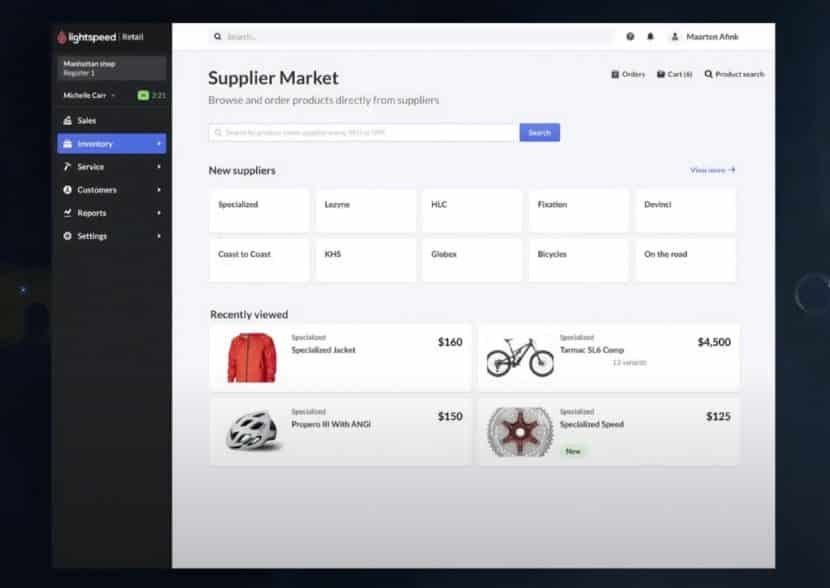

Although OnSite contains the information required to track your accounts receivable (which is how much your customers owe you), most of the accounts payable (which is how much you owe your suppliers) workflow is taken care of in your accounting software. Supplier invoices are the accounts payable documents that integrate OnSite with your accounting package. Products received on a PO go into available status, and should be reserved to their orders so they no longer show as available. Click the detail arrow beside each product to display the order requests.Īfter you place a PO with a supplier, the products must be received when they arrive.
#Lightspeed onsite create suppplier code
Each product on the PO has a supplier code and cost for the supplier. Purchase orders (POs) are created directly from an order or compiled from several order requests that are sourced at the same supplier. When the item arrives and is received into inventory on the PO, you reserve the item on the order until the customer is ready for it and the order is converted into an invoice. If a product is not reserved, it is converted to an order request that remains pending until it is compiled onto a purchase order, usually with other order requests.Īfter an order request is compiled onto a PO, you can click the status bar of the product to display the PO it is ordered on. Customer orders and are used to reserve available inventory for a customer, and stock orders request product from a supplier. You create customer orders from the Tool bar by clicking the Order icon. You create a stock order from File > New Stock Order, and your store is automatically assigned as the customer. There are two kinds of orders you can create: stock orders and customer orders. Or you can create a stock order as outlined below. You can create a purchase order for ordering stock and add customer order requests to the unreceived purchase order to link the order with the stock PO. Supplier Invoice created, if applicable, for Accounting Exports workflow.You place the purchase order with the supplier.If you have multiple order requests you can compile them onto a purchase order, or you can convert one order directly to a purchase order.A customer order request is submitted on an order.Overview of backordering and selling products for a customer If more than one Supplier Cost is added to a Product, you must decide which of these Suppliers is your Default Supplier, who is the Supplier you most often buy this product from. Products must be mapped to the Suppliers where they are purchased, in the Supplier Costs grid of the Product card, and must include a Supplier Code and a Cost. The purchasing workflow requires some initial configuration to be completed. The Purchasing section of the Browser is where you view your purchasing-related items - Order Requests, Purchase Orders, and Supplier Invoices.

Integrated with Quotes, Invoices, and SROs, the Order feature of Lightspeed gives you a quick transition from one stage of the sales process to another, giving you an immediate overview of the status of real-time inventory levels. They also have a unique set of features that enable users to intuitively request Product for a Customer. Orders are structured like other sales documents, in terms of adding Products and Customers and configuring Options. Each sales document is able to request product via an order, and purchase orders can be generated according to products, suppliers or orders. OnSite simplifies your ordering process, whether it’s product coming in for a stock order, a customer back order, or an SRO.


 0 kommentar(er)
0 kommentar(er)
